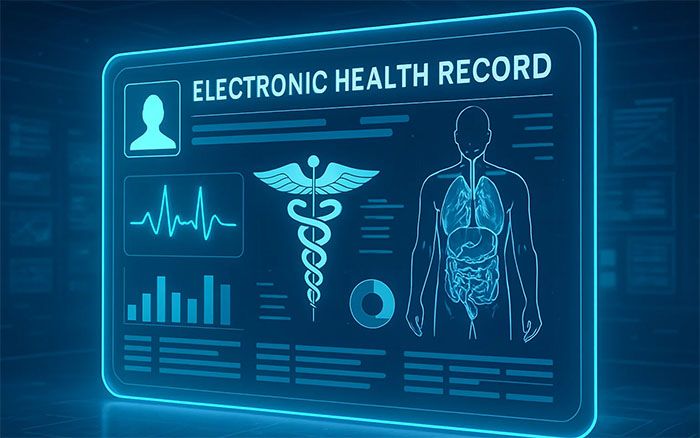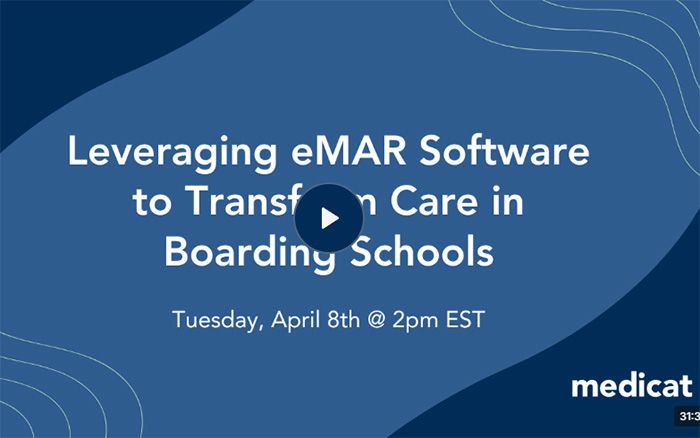5 Features Your Current EHR is Missing
Here’s How Medicat One Fills the Gaps

We don’t create features just for innovation — we build them based on direct feedback from real users. College health centers face many challenges, from overbooked walk-in hours to rotating staff and limited IT support. In this overview, we’re diving into the nitty-gritty details of specific, practical features in Medicat One, our cloud-based EHR platform, that our customers find the most useful.
Let’s explore these five targeted, impactful improvements that are helping college health directors run more efficient and responsive clinics.
1. Form Builder with Auto-Posting: Automate Tasks That Used to Take Hours
Here’s how it works in practice:
You’ve created a new intake form for students scheduling travel consultations. With Medicat One’s Template Transaction Linker, if a student lists a medical condition that requires special vaccines or precautions, the system automatically posts a relevant note, applies the correct billing code, and alerts the appropriate staff member.
Tip: You can also improve the student experience by cleaning up form layouts, hiding unanswered questions, and replacing confusing labels with plain language responses like “Yes” or “No.”
Why does this benefit your workflow?
Eliminates repetitive tasks, improves accuracy, and speeds up care delivery without sacrificing compliance.
2. Order Manager: Track All Lab and Diagnostic Orders in One Place
How does this enhance clinic efficiency?
Your clinic likely handles a mix of in-house labs and external diagnostic orders. Previously, you might have had to search through different screens or rely on manual entry to get access to key lab results.
However, with our new Order Manager tool, your staff can view and manage all open orders. This includes lab tests and x-rays, all from a single dashboard.
Furthermore, the dashboard also allows your team to flag abnormal results, initiate follow-up actions, and even manage billing—all in one location.
Why does this benefit your workflow?
This feature closes care loops more reliably, reduces missed follow-ups, and gives directors better visibility into clinical lab operations.
3. Built-In Document Manager: No More Jumping Between Systems
Picture this: You’re collecting important student documents like immunization records and consent forms. Instead of scanning and managing these files in a separate system or email, Medicat One integrates a Document Manager right into the Activity menu, so your staff can upload, scan, and organize paperwork directly inside your EHR.
Why does this benefit your workflow?
Improves organization, reduces time spent searching for documents, and supports accurate, secure record keeping for smoother daily operations.
4. Self-Service Password Reset: Empower Staff and Lighten IT Workloads
A common experience during the first week of classes:
Several new part-time staff and student employees are trying to log into your EHR, but some of them forget their passwords.
But now…
Instead of submitting help desk tickets or waiting for IT, they can now reset their credentials using a secure, self-service process.
Why does this benefit your workflow?
Reduces login delays, prevents unnecessary downtime, and decreases IT support volume—especially during high-traffic times like the start of the semester.
5. Smarter Tab Navigation: Multitasking with More Control
Consider this scenario:
You’re juggling multiple tasks during a busy morning, switching between a patient chart, lab results, and an urgent message from your nursing team.
The enhanced tab navigation in Medicat One helps you stay focused. You can easily close unrelated tabs and reorder remaining tabs by priority using drag and drop.
Why does this benefit your EHR workflow?
Improves efficiency, reduces errors caused by tab confusion and overwhelm, and supports fast-paced clinical decision-making.
P.S. Grab our top tips on simplifying immunization compliance on your campus here.
Key Takeaways
At Medicat, every feature we release is rooted in real conversations with college health and well-being professionals. These updates aren’t just nice-to-haves—they’re designed to simplify your daily workflow, support your team, and improve the student experience.
If any of these new tools could help your clinic operate more efficiently, we’d love to connect and show you how they work.











